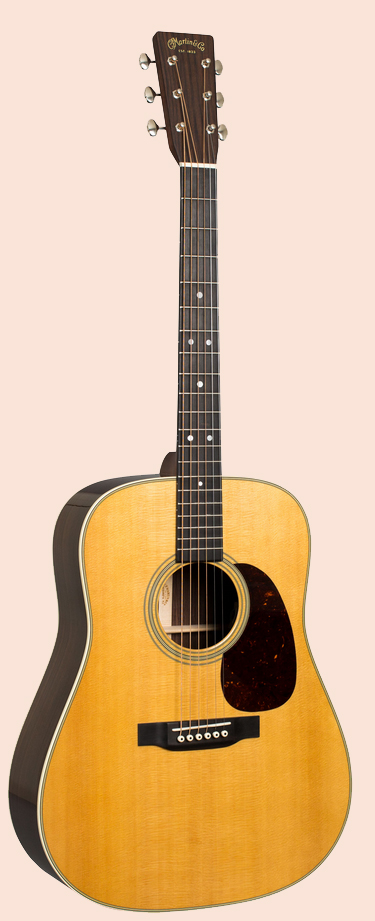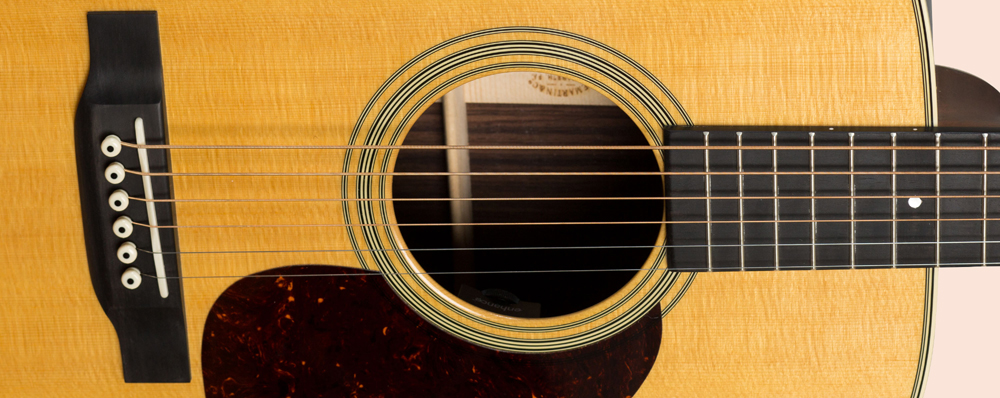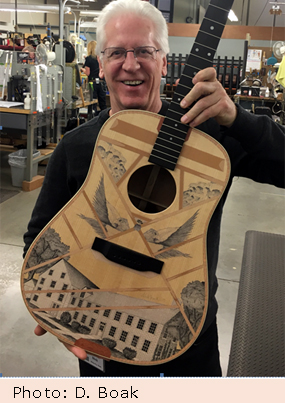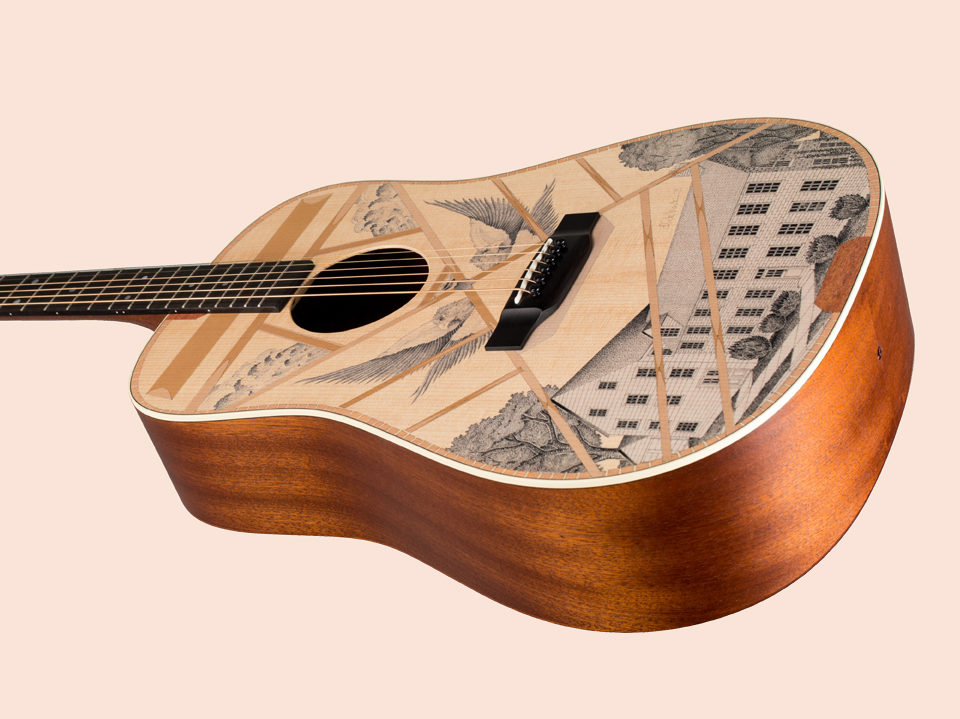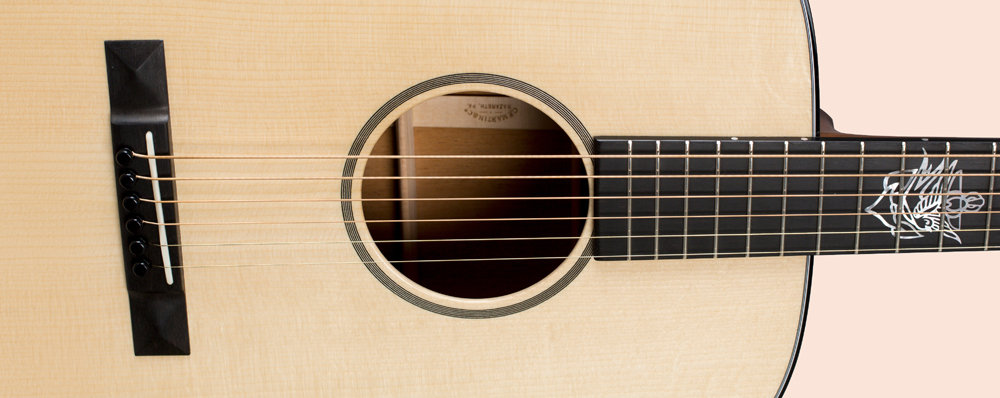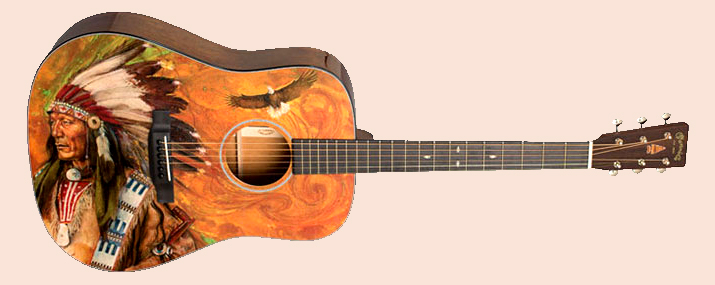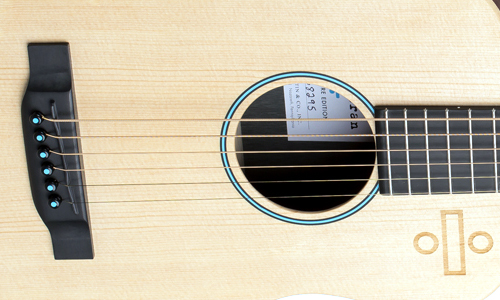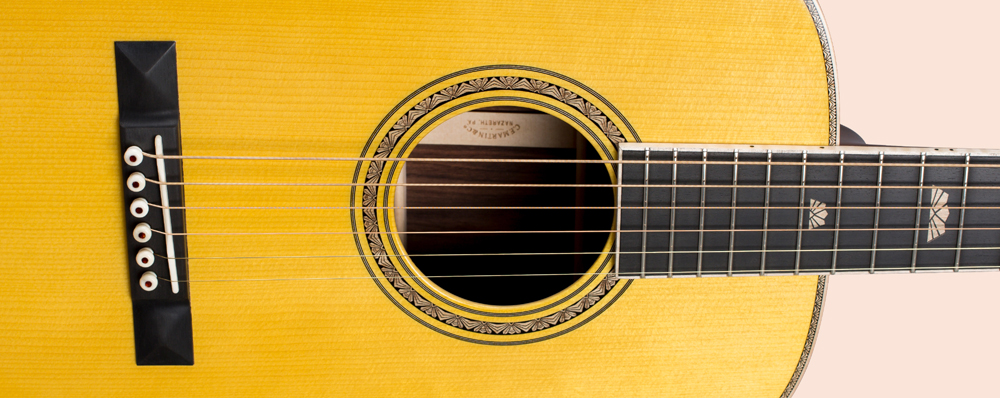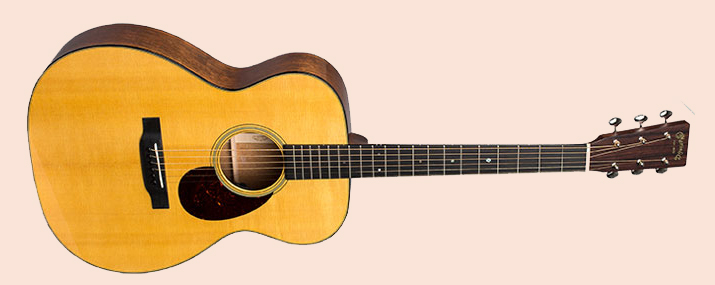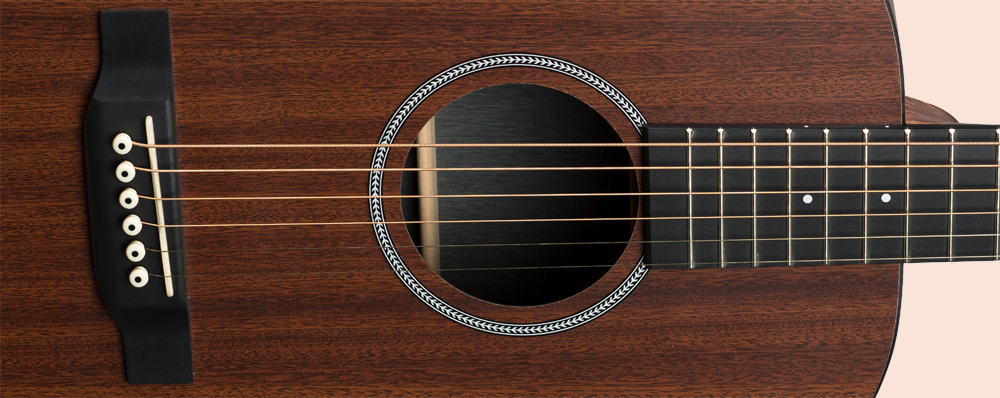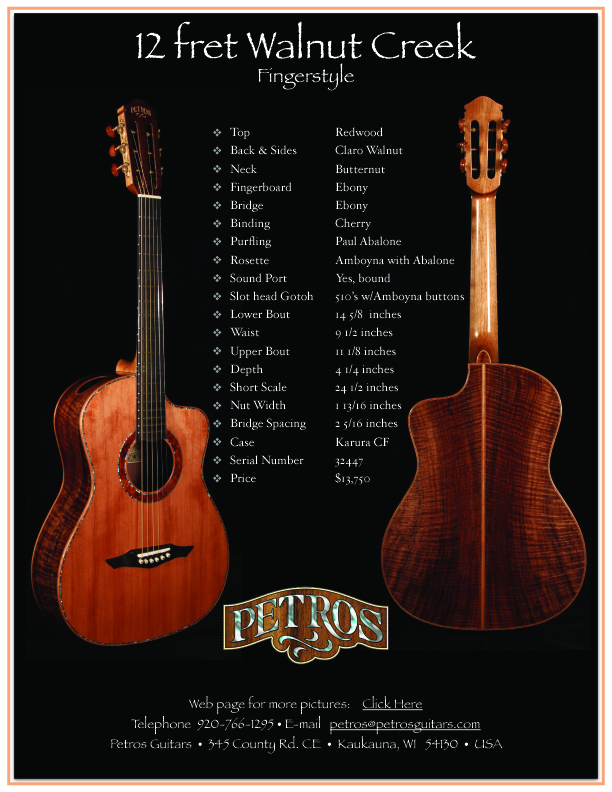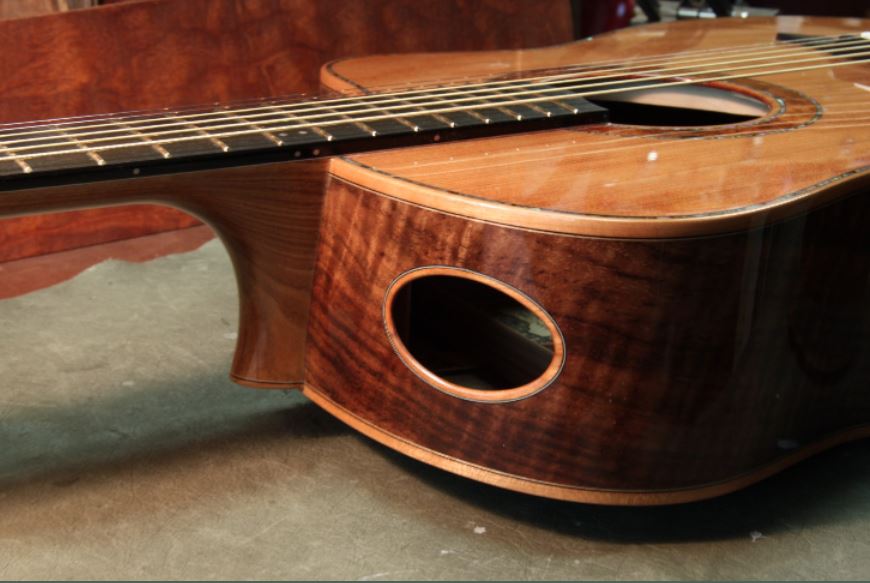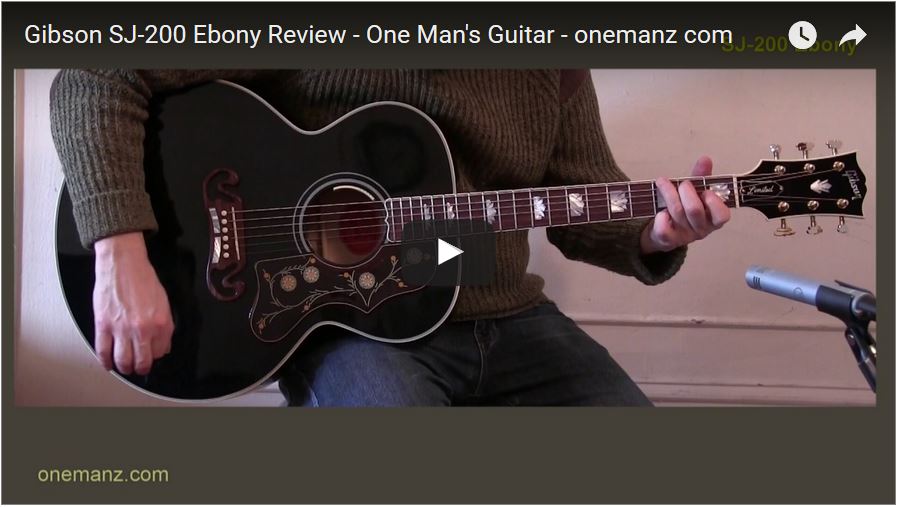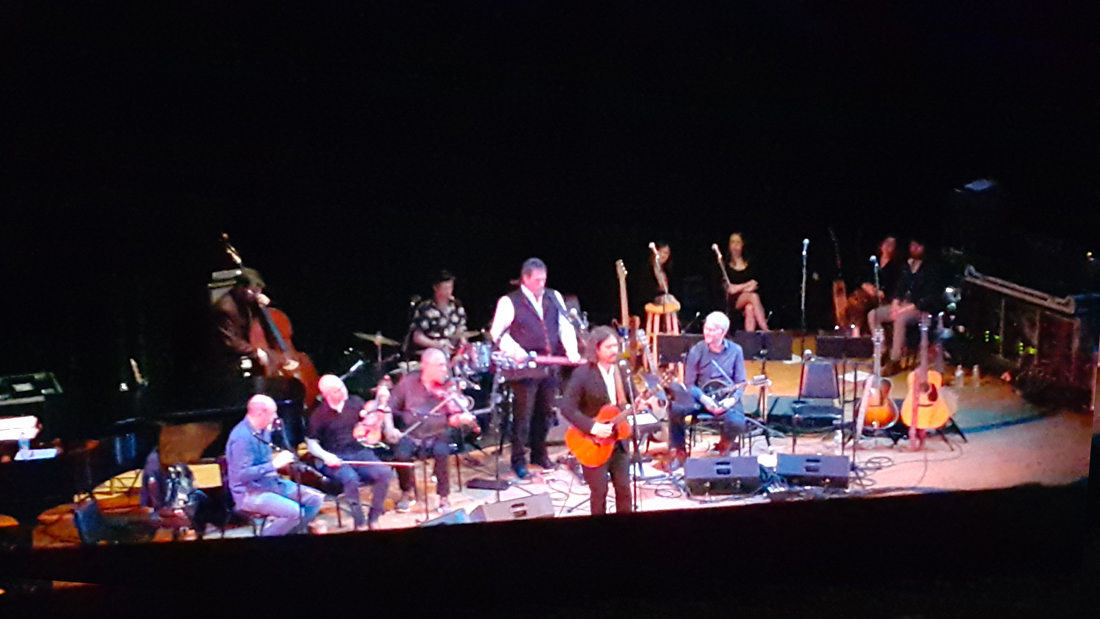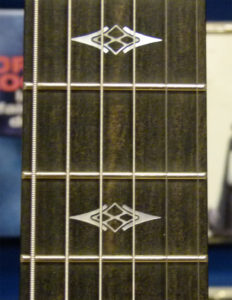A Reader inquires as to why there are wider necks on “fingerstyle” guitars.
On the Martin site the phrase, “wider hand-fit dovetail neck to accommodate fingerstyle players.” is used. As a fingerstyle player for over 20 years and a person with small hands, I can’t think of a worse thing to say to me about this guitar. Why would I want a wider neck? What does that have to do with finger style guitar?
– Fergus from Australia
Spoon Replies:
Thank you for your query, Fergus. The simplest answer is, most fingerstylists want wider string spacing for the picking hand, while players with larger hands are most comfortable with a larger neck.
Wider string spacing allows for all that alternate-bass-note thumbpicking and fingerpicking without unintended contact with strings not meant to be played. This is particularly true for those just learning how to play fingerstyle guitar. And often, once a player gets used to wider spacing they prefer it.
But then, allowing the picking hand extra space means the fretting hand is required to take on more extensive stretches to reach those spread-out strings on the wider fretboard.
In other words, it is a trade-off for those of us with hands of average size or smaller.
However, many accomplished guitarists have longer than average bones in their fingers and thumbs, and the string spacing on a narrower neck feels much more cramped and confining for them. While there will always be exceptions, I believe a greater number of professional guitarists fall into this category. Advanced guitar playing comes easier to those with longer fingers, but they prefer wider spacing, while those with larger hands want beefier necks.
Eric Schoenberg was the influential Ragtime and Blues guitarist who convinced Martin to resurrect their OM design in 1969, with the 1-3/4″ width at nut and 2-1/4″ width at the 12th fret. And his guitar shop went on to commission many other guitars made with even wider necks. Otherwise, all those Folkies from the ’50s and ’60s who played the 12-fret Martins with 1-7/8″ necks were simply used to the wider spacing.
After all, Classical guitars have a 2″ width at the nut, which makes the neck feel a mile wide for those used to steel string acoustic and electric guitars.
The original Martin guitars were intended for professional musicians who played the Classical repertoire, but they had a slightly narrower neck of 1-7/8″ at the nut, and 2-5/16″ at the 12th fret. All 12-fret Martins came with that measurement until the modern era, when they were narrowed slightly to 1-13/16″ for the Standard and Vintage Series. Some others have a 1-3/4″ neck.
The first 14-fret guitar invented by Martin in 1929 was a special order for a famous banjoist who wanted a steel string guitar with a longer neck and a narrower fingerboard than Martin was making at that time. This design was used for the first Martin OM models and had a 1-3/4″ width at the nut and 2-1/4″ at the 12th fret, and 2-3/8″ or 2-5/16″ string spacing. They have been considered the quintessential fingerstyle guitar ever since, in terms of 14-fret instruments.
When Martin converted all their body sizes to a 14-fret “Orchestra Model” design in 1934, they got a 1-3/4″ neck and the string spacing was standardized at 2-5/16″.
They moved to the 1-11/16″ neck in 1939, which is 2-1/8″ wide at the 12th fret and has 2-1/8″ string spacing. But the necks in those days were a lot thicker, to account for the tension of steel strings without an adjustable truss rod, which Martin did not start using until 1985, when they introduced their Low Profile neck shape.
A fatter neck requires the fingers to travel farther out and around to reach their destination. So players with longer fingers and thumbs find modern narrow necks feel even more cramped than older guitars with the same fingerboard width.
This is why Martin’s new High Performance neck has a 1-3/4″ width, even though it otherwise retained the 2-1/8″ measurement at the 12th fret. The area down by the nut felt too cramped for most players when the neck had a shallow profile and 1-11/16″ width, so they made it a little wider down in the “cowboy chord” area to compensate for their shallow Modified Low Oval profile. And the wider nut allowed them to increase the string spacing a little bit as well.
But while Martin was once the trendsetter when it came to things like guitar necks, they were quite late coming to this adjustment, as Taylor and many other guitar makers had been doing this for years. The idea is to have a compromise that will hopefully appeal to the widest population of players who want comfort and just enough space for fingerpicking.
The Martins with traditionally neck widths are there for those who want or need all that extra room and girth. And their Custom Shop will make most any model with any neck size and shape.
I certainly relate to your concerns. I was one of the players who converted from the low, narrow modern guitar necks of the 1970s when I began to develop my fingerstyle technique in the 1990s. The wider string spacing on traditional OMs gave my picking hand the room it wanted, even if the fretting hand faced a greater degree of difficulty, particularly with a vintage-style V neck.
Only in recent years have I returned to the 1-11/16″ Low Profile neck, due to some injury issues and the fact I often have to do all sorts of thumb-fretted Jazz chords. I discovered my fingerstyle technique is disciplined enough these days that I barely notice the lack of space over the sound hole. But my fretting hand is much happier.
While most of my guitars have the traditional OM width, I could never get on with the 1-13/16″ width at nut, and 1-7/8″ is out of the question. I probably should have been playing the narrower 1-11/16″ neck all these many years.
But I am the exception rather than the rule.
There is some irony in the fact that modern alternate-thumb style fingerpicking is named for Merle Travis, who wanted as narrow a neck as possible, because he had short digits and did so much thumb-fretting. But he was exceptional in all regards, including the fact he did all his fancy picking with only his thumb and index finger.
But when you watch Jimi Hendrix play, it is obvious just how long are his fingers and especially his thumb. All the way up the neck he can barre four or five strings with his thumb and still make chord shapes and play lead riffs with his fingers. Richie Havens had one of those thumbs too.
Stephen Stills plays fat Martin necks from the 1930s and makes the basic open C chord with his thumb coming around to fret both the E and A strings at the third position, while his fingers do all sorts of things upon the strings. Leo Kottke’s scimitar-shaped thumbs are so long they look like they have extra bones in them, and we all know how capable is his playing.
I can’t do any of that stuff on even the lowest, narrowest necks made for acoustic guitars.
But once I realized all these guys were actually mutants, I no longer felt bad that I could not play everything they could play as easy as pie. And I also figured out that I need not play wider necks for fingerstyle just because the “rule of thumb” says to.
I just needed to find the neck and string spacing my own hands could play, with the most comfort and facility.
Fortunately, Martin continues to make guitars with necks and string spacing that allow almost everyone to find something that works for them. And most other guitar makers will have some custom shop parameters that can accommodate most of their potential customers as well.
And that is one man’s word on…
Why “Fingerstyle Guitars” Have Wider Necks
Like this:
Like Loading...
